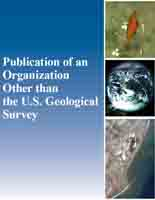Impacts of West Nile Virus on wildlife
Links
- Document: Report (pdf)
- Download citation as: RIS | Dublin Core
Abstract
The recent epidemic of West Nile virus in the United States proved to be unexpectedly active and was the largest epidemic of the virus ever recorded. Much remains to be discovered about the ecology and epidemiology of West Nile virus in the United States, including which species are important in maintaining the virus in nature, why some species are more susceptible to lethal infection, and what environmental factors are important in predicting future epidemics. These factors will likely vary regionally, depending on local ecological characteristics. Until scientists better understand the virus and factors influencing its activity, predicting its effects for future seasons is impossible. However, experts are certain about one thing: West Nile virus is here to stay.
Study Area
| Publication type | Article |
|---|---|
| Publication Subtype | Journal Article |
| Title | Impacts of West Nile Virus on wildlife |
| Series title | Park Science |
| Volume | 22 |
| Issue | 2 |
| Year Published | 2004 |
| Language | English |
| Contributing office(s) | National Wildlife Health Center |
| Description | p. 59-60 |
| Larger Work Type | Article |
| Larger Work Subtype | Journal Article |
| Larger Work Title | Park Science |
| First page | 59 |
| Last page | 60 |
| Country | United States |
| Online Only (Y/N) | N |
| Additional Online Files (Y/N) | N |


